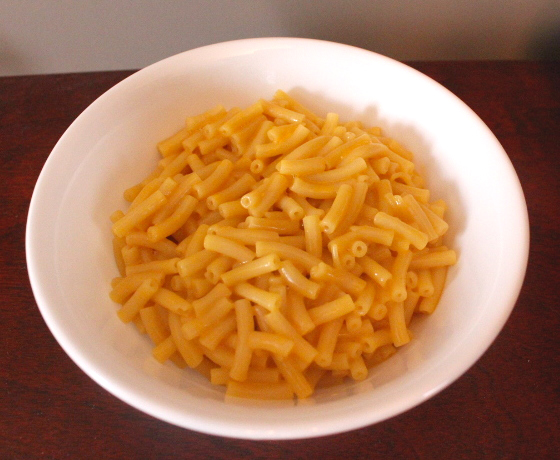
In a world where profits often trump quality, companies are constantly finding ways to trim expenses. But some cost-cutting moves have gone too far—damaging once-beloved products, frustrating loyal customers, and destroying brand trust. Whether it’s swapping out key ingredients, shrinking package sizes, or outsourcing production, the results are often disappointing at best and infuriating at worst. These cost-saving decisions may look good on a spreadsheet, but consumers often feel the real impact in their homes, hands, or taste buds. Here are seven real-world examples of cost-cutting that backfired—and left products worse off than before.
1. Kraft Changed the Mac & Cheese Recipe
Kraft Mac & Cheese has been a comfort food staple for generations, but in 2015, the brand quietly removed artificial dyes and preservatives to cut costs. While marketed as a health-conscious move, many customers complained about the new taste and texture. Some said it was less creamy, while others felt it lost the flavor they remembered. By using cheaper, “cleaner” ingredients, the brand alienated a portion of its loyal fanbase. This is one of those cost-cutting moves that felt like a bait-and-switch to consumers who just wanted the classic.
2. Hershey’s Changed Its Chocolate Formula
Hershey’s once had a strong reputation for rich, creamy chocolate—until it changed the formula to save on production costs. Instead of using real cocoa butter, the company began substituting cheaper vegetable oils in some products. While still technically chocolate by FDA standards, many chocolate lovers noticed the difference immediately. The texture became waxier, and the flavor lost its familiar richness. Saving money on ingredients may have helped the bottom line, but it left a bitter taste for longtime fans.
3. Hotel Chains Removed Daily Housekeeping
During the pandemic, many hotel chains cut back on daily housekeeping services to reduce labor costs. But instead of bringing it back as travel resumed, some made the change permanent. Now, guests must request fresh towels or trash removal—and often only for longer stays. What was once standard service now feels like a premium add-on, even when room rates remain the same or higher. For travelers, this is one of the most noticeable cost-cutting moves that directly reduced comfort and convenience.
4. Nabisco Moved Oreo Production to Mexico

When Nabisco shifted some Oreo production from the U.S. to Mexico, it was primarily to cut manufacturing costs. But for many Americans, it also cut their loyalty to the brand. Labor unions protested, and some customers claimed the cookies tasted different—though Nabisco denied any recipe changes. Regardless of taste, the perception of lower quality and lost jobs did long-term damage to the brand’s image. Sometimes the optics of cutting costs are just as harmful as the outcome.
5. Appliances with Plastic Parts Instead of Metal
Many modern appliances—from dishwashers to washing machines—look sleek but feel flimsier than they used to. That’s because manufacturers increasingly use plastic components instead of metal to reduce weight and manufacturing costs. While lighter parts save money in the short term, they often break down faster, leading to more frequent repairs or replacements. Consumers end up paying more in the long run for products that don’t last. This is one of those hidden cost-cutting moves that quietly reduces value over time.
6. Fast Food Portions That Keep Shrinking
From burger sizes to french fry servings, fast food chains have gradually reduced portions while keeping prices the same. This tactic, known as “shrinkflation,” is a common way companies lower costs without raising eyebrows—at first. But once customers start comparing old and new portions, trust erodes. When a “value meal” no longer feels like a value, people begin to look elsewhere. This subtle strategy may save money, but it doesn’t fool observant consumers.
7. Airlines Eliminated Free Perks
Remember when you used to get a free checked bag, a snack, and maybe even legroom with your ticket? Airlines have stripped away those perks to offer cheaper base fares, but passengers are paying in other ways. Now, nearly every service—from seat selection to carry-on luggage—comes with an extra fee. The flying experience has become more stressful and less comfortable, despite the illusion of affordability. These cost-cutting moves are a prime example of how less value can come wrapped in a low-cost disguise.
Cheaper for Them, Worse for You
While businesses are always looking to increase efficiency, not every cost-cutting strategy benefits the consumer. In many cases, quality suffers, loyalty drops, and the long-term damage outweighs the savings. These cost-cutting moves may help the bottom line temporarily, but they often come at the expense of the customer experience. If something you once loved now feels… off, there’s a good chance it was tweaked to save money. And as consumers, we’re the ones left holding the lighter, cheaper, less satisfying version.
What’s one item you used to love that changed for the worse after a company tried to cut corners? Share your story in the comments—we want to hear what let you down!
Read More
6 New Products That Already Have Negative Reviews
9 Baby Products That Were Quietly Recalled Without Headlines
The post 7 Cost-Cutting Moves That Made Products Worse appeared first on Grocery Coupon Guide.







